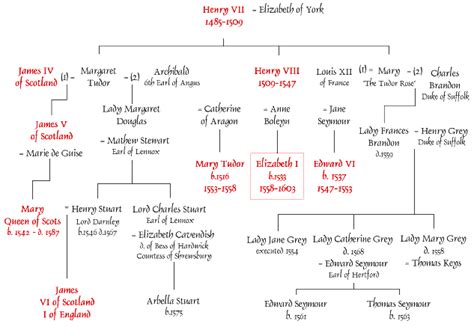when did the tudor dynasty end | who succeeded the tudors when did the tudor dynasty end End of the Tudor Dynasty . None of Henry VIII’s children had any lasting offspring of their own, and when Elizabeth I died, she was the last of the Tudor monarchs; she was followed by James Stuart from Scotland, the first of . Nov 13, 2019 Updated Nov 14, 2019. 0. ALLENTOWN, Pa. – The Lehigh County commissioners approved the Lehigh Valley Planning Commission's "Future LV: The Regional Plan" as the updated Lehigh.
0 · who succeeded the tudors
1 · who succeeded the tudor dynasty
2 · tudor line of succession
3 · tudor dynasty family tree
4 · the tudors time period
5 · house of tudor timeline
6 · henry tudor family tree
7 · brief history of the tudors
Low voltage fuses can further divide into two types, namely semi-enclosed or rewirable type and entirely enclosed cartridge type. Rewirable Fuses. Rewirable fuses are most commonly used in housing wiring and small current .
The Tudor dynasty was marked by Henry VIII’s break with the papacy in Rome (1534) and the beginning of the English Reformation, which, after turns and trials, culminated .In England and Wales, the Tudor period occurred between 1485 and 1603, including the Elizabethan era during the reign of Elizabeth I (1558–1603). The Tudor period coincides with the dynasty of the House of Tudor in England, which began with the reign of Henry VII. Under the Tudor dynasty, art, architecture, trade, exploration, and commerce flourished. Historian John Guy (1988) argue. The Tudor dynasty came to an end with Elizabeth I’s death in 1603, leading to the ascension of the Stuart dynasty. However, the impact of the Tudors on English politics, . The House of Tudor ruled England from 1485 to 1603 CE. The period is seen as a Golden Age of English history when strong-willed monarchs made lasting contributions to the .
who succeeded the tudors
who succeeded the tudor dynasty
End of the Tudor Dynasty . None of Henry VIII’s children had any lasting offspring of their own, and when Elizabeth I died, she was the last of the Tudor monarchs; she was followed by James Stuart from Scotland, the first of .England underwent huge changes during the reigns of three generations of Tudor monarchs. Henry VIII ushered in a new state religion, and the increasing confidence of the state coincided .
The dynasty began and ended in uncertainty and insecurity. Henry VII was a usurper, a small-time adventurer who got lucky. After clutching the crown in 1485 he spent the rest of his reign clinging to it anxiously, worried that some other .
The years of Tudor rule saw unprecedented upheaval. Discover the huge changes that took place between the crowning of Henry VII and death of Elizabeth I.
End of the Tudor Dynasty: The Tudor dynasty ended with Elizabeth I’s death in 1603, leading to the Stuart dynasty’s succession. From the consolidation of power by Henry VII to the religious transformations under . The Monarchs of the Tudor Period, via The History of England. In total, through 5 monarchs, the Tudors ruled England and Wales for a total of 118 years, presenting us with a dynasty that contains arguably the most well . The Wars of the Roses (1455-1487 CE) was a dynastic conflict where the nobility and monarchs of England intermittently battled for supremacy over a period of four decades. .
She famously remained unmarried, bringing the Tudor dynasty to a close with her death in 1603. . which dates to the very end of the queen’s reign but shows an ethereal figure .
At the end of the year the English navy seized a treasure ship bound for the Netherlands, which was controlled by Spain. Philip II of Spain was very cross and relations between England and .On the 24th March of 1603, Queen Elizabeth I, the daughter of King Henry VIII and his second wife, Anne Boleyn, died at Richmond Palace. She ruled England for almost 45 years. Often . TUDOR DYNASTY ()TUDOR DYNASTY (ENGLAND). Henry Tudor (ruled 1485 – 1509) traced his royal blood through his mother, Margaret Beaufort, who was a descendant of . The conflict ended in 1485 when Henry Tudor, a Lancastrian claimant, defeated the Yorkist king Richard III at the Battle of Bosworth Field. Henry‘s victory marked the end of .
Tudor Rose. The Tudor dynasty was a series of kings and queens of England.Their ancestors were from Wales.This line of rulers started in 1485 and lasted until 1603. Henry Tudor. The .Henry VII (born January 28, 1457, Pembroke Castle, Pembrokeshire, Wales—died April 21, 1509, Richmond, Surrey, England) was the king of England (1485–1509), who succeeded in ending . Henry VII, the first Tudor king of England, ruled from 1485 to 1509. While often overshadowed by his charismatic son Henry VIII and granddaughter Elizabeth I, Henry VII‘s .
tudor line of succession
An Introduction to Tudor England (1485–1603) England underwent huge changes during the reigns of three generations of Tudor monarchs. Henry VIII ushered in a new state religion, and .
The Tudors were a Welsh-English family that ruled England from 1485 to 1603. They came to power as a result of the victory of Henry VII over Yorkist king Richard III at the Battle of .

Full House (10 player) is a dungeon & raids achievement earned for defeating Lady Deathwhisper with at least five different types of Cultists active at the time of her demise on 10-player mode. Strategy. Empowered Adherents currently do not count. You will need a Cult Adherent, Cult Fanatic, Deformed Fanatic, Reanimated Fanatic and Reanimated .
when did the tudor dynasty end|who succeeded the tudors



























